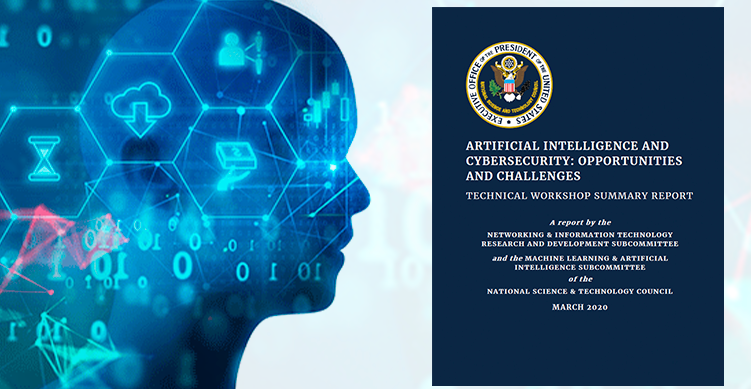View Full Text: AI-CS-Tech-Summary-2020.pdf
On June 4-6, 2019, the National Science and Technology Council Subcommittees on National Information Technology and Networking Research and Development and Machine Learning and Artificial Intelligence held a workshop to assess the research challenges and opportunities at the intersection of cybersecurity and artificial intelligence (AI). The “Artificial Intelligence and Cybersecurity: Opportunities and Challenges” report summarizes the workshop discussions.
Technology is at an inflection point in history. AI and machine learning (ML) are advancing faster than society’s ability to absorb and understand them; at the same time, computing systems that employ AI and ML are becoming more pervasive and critical. These new capabilities can make the world safer and more affordable, just, and environmentally sound; conversely, they introduce security challenges that could imperil public and private life.
The challenges are manifold. AI systems need to be secure, which includes understanding what it means for them to “be secure.” Additionally, AI techniques could change the current asymmetric defender-versus-adversary balance in cybersecurity. The speed and accuracy of these advances will enable systems to act autonomously, to react and defend at wire speed, and to detect overt and covert adversarial reconnaissance and attacks. Therefore, securing the Nation’s future requires substantial research investment in both AI and cybersecurity.
AI investments must advance the theory and practice of secure AI-enabled system construction and deployment. Considerable efforts in managing AI are needed to produce secure training, defend models from adversarial inputs and reconnaissance, and verify model robustness, fairness, and privacy. This includes secure AI-based decision-making and methods for the trustworthy use of AI-human systems and environments. This will require a science, practice, and engineering discipline for the integration of AI into computational and cyber-physical systems that includes the collection and distribution of an AI corpus—including systems, models and datasets—for educational, research, and validation.
For cybersecurity, research investments must apply AI-systems within critical infrastructure to help resolve persistent cybersecurity challenges. Current techniques include network monitoring for detecting anomalies, software analysis techniques to identify vulnerabilities in code, and cyber-reasoning systems to synthesize defensive patches at first indication of attack. AI systems can perform these analyses in seconds instead of days or weeks; in principle, cyber-attacks could be observed and defended against as they occur. However, safe deployment will require understanding the multiple dimensions and implications of these AI actions.


